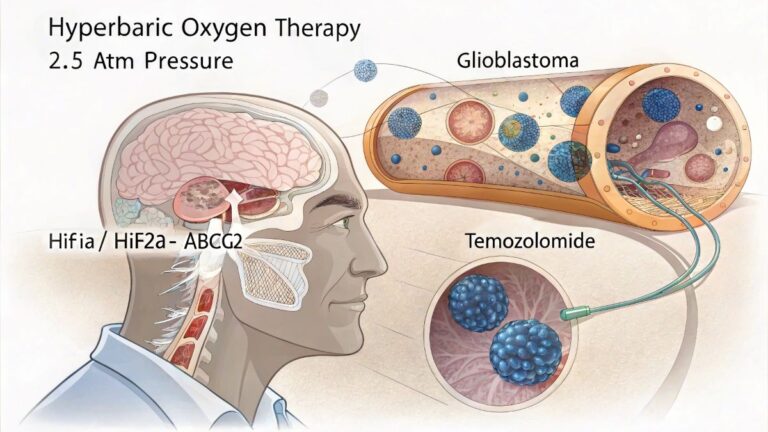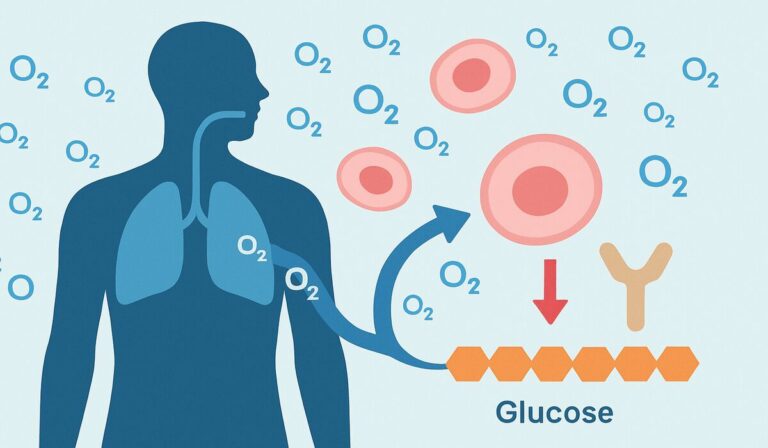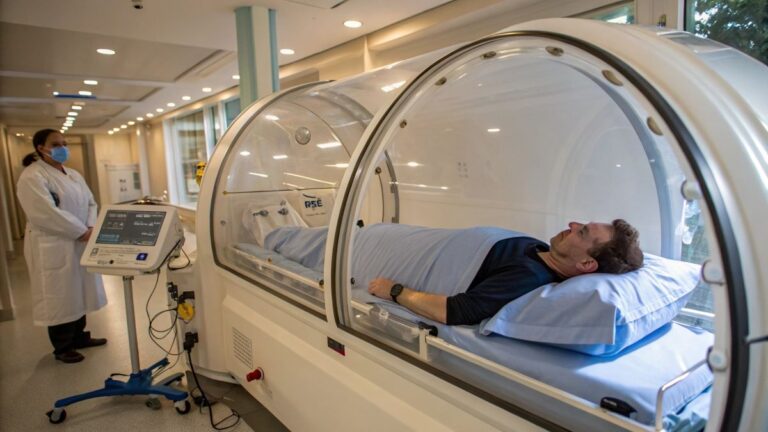- A 70-year-old man developed a spinal epidural abscess after a traumatic fall 17 days earlier, complicated by dental infection and Streptococcus intermedius bacteremia.
- Standard treatment with antibiotics and decompressive surgery failed to improve neurological symptoms in the patient’s right upper limb.
- Hyperbaric oxygen therapy at 2.0 atmospheres absolute for 60 minutes daily over 30 sessions was added as adjunctive treatment on postoperative day 5.
- Motor function improved significantly after initiating HBOT, with the patient regaining right upper limb movement and transferring to rehabilitation by day 110.
- Spinal epidural abscess affects 0.2 to 2.0 per 10,000 hospital admissions, with increasing prevalence in aging populations and those undergoing spinal procedures.
Researchers at Shimane University in Japan successfully treated a complex spinal epidural abscess case using hyperbaric oxygen therapy as an adjunctive treatment.
The case, published in the Journal of Clinical Medicine in October 2025, involved a 70-year-old man whose condition failed to improve with standard surgical and antibiotic interventions alone.
Dr. Yoshiaki Iwashita and colleagues from the Department of Emergency and Critical Care Medicine documented the case in their report, which highlights the potential role of HBOT (hyperbaric oxygen therapy) in treating refractory spinal infections.
Complex Medical Presentation
The patient presented with severe neck pain, fever of 39.0 degrees Celsius, and inability to move his right shoulder or properly flex his elbow. These symptoms developed 17 days after he fell forward at home following alcohol consumption.
Medical imaging revealed a C3 vertebral fracture with both ventral and dorsal epidural lesions compressing the spinal cord. Blood cultures identified Streptococcus intermedius, and dental examination found multiple untreated cavities. According to the research team, the infection appeared to have developed when bacteria from the dental infection entered a post-traumatic epidural hematoma created by the fall.
Laboratory results showed C-reactive protein levels of 31.5 mg/dL and procalcitonin levels of 1.57 ng/mL, along with anemia and thrombocytopenia. Enhanced CT imaging showed peripheral rim enhancement consistent with infection of the existing hematoma.
Standard Treatment Proves Insufficient
Physicians initially started intravenous meropenem, switching to ampicillin on day 6 after antimicrobial susceptibility results became available. While fever and inflammation decreased, neurological symptoms showed no improvement.
By day 9, the patient’s motor function had worsened significantly. Manual muscle testing revealed severe weakness in shoulder abduction, elbow flexion and extension, and wrist movements. Surgeons performed C5-6 laminoplasty, partial laminectomy of C2 and C7, and complete laminectomy of C3 and C4 to decompress and drain the spinal cord.
The surgical procedure aimed to relieve pressure on the spinal cord, but neurological findings remained unchanged the day after surgery. “Despite surgery and culture-directed antibiotics, the clinical symptoms remained unchanged,” the researchers noted in their report.
Hyperbaric Oxygen Therapy Protocol
The medical team initiated HBOT on postoperative day 5 as an adjunctive therapy. The protocol followed recommendations from The Japanese Society of Hyperbaric and Undersea Medicine, consisting of 2.0 atmospheres absolute pressure for 60 minutes once daily over 30 total sessions.
HBOT works by increasing dissolved oxygen in blood and tissues, which enhances phagocytic killing of bacteria, reduces edema, and improves antibiotic penetration into poorly perfused areas. The Undersea and Hyperbaric Medical Society currently recognizes 14 established indications for HBOT, including intracranial abscess and refractory osteomyelitis, though spinal epidural abscess is not among the standard indications.
Clinical Improvement Following HBOT
After starting hyperbaric oxygen therapy, the patient showed marked improvement. Pain decreased, inflammatory markers dropped, and motor function recovered progressively. By day 23, manual muscle testing demonstrated significant gains in shoulder, elbow, wrist, and finger movements.
MRI imaging on day 23 showed anterior compression at the C3-4 level had progressed, but spinal canal stenosis had not developed due to the prior laminectomy. The medical team considered an anterior surgical approach but chose conservative management because inflammatory markers remained low with antibiotic therapy.
By day 89, MRI demonstrated reduction in epidural collection, cord decompression, and pre-vertebral abscess. Intravenous antibiotics continued until day 91, then switched to oral antibiotics. On day 110, the patient had regained right upper limb function and transferred to a rehabilitation hospital.
Clinical Implications and Mechanisms
The researchers acknowledge several limitations in their case. The delay in surgical intervention may have contributed to initial severity and persistence of neurological deficits. HBOT was introduced after surgery, and earlier initiation might have facilitated faster recovery, though this remains speculative.
“HBOT should not delay urgent surgery or antimicrobial therapy; however, our findings demonstrate that it can be considered as an adjunctive therapy, though further studies are warranted to clarify these indications,” the authors wrote.
Beyond infection control, HBOT has shown promise in traumatic spinal cord injury models, where it reduces neuroinflammation, limits cell death, and promotes neurological recovery. Research published in the Journal of Back and Musculoskeletal Rehabilitation suggested improvements in motor and sensory scores following HBOT compared to standard therapy alone.
Rare Complication of Trauma
Secondary infection of pre-existing epidural hematomas remains uncommon but mechanistically plausible. Trauma predisposes up to one-third of spinal epidural abscess cases and creates a hematoma that can become a nutrient-rich environment for bacteria during bacteremia episodes.
Spinal epidural abscess affects an estimated 0.2 to 2.0 cases per 10,000 hospital admissions, with increasing prevalence parallel to aging populations and wider use of spinal instrumentation. The condition predominantly affects middle-aged to elderly adults with slight male predominance. According to research published in the New England Journal of Medicine, delays in diagnosis strongly associate with worse neurological outcomes.
Standard therapy consists of prolonged intravenous antibiotics, commonly over six weeks, combined with surgical drainage when indicated. Despite appropriate treatment, permanent neurological deficits can result if diagnosis or intervention is delayed beyond 24 to 36 hours.
The case report, authored by Iwashita and colleagues including Naho Yoshioka, Kotaro Murakami, Ken Mukoyama, Rie Sato, Nobuhiro Kodani, and Tetsuya Makiishi, appears in the October 2025 issue of the Journal of Clinical Medicine under a CC BY 4.0 license.
Citation: Iwashita, Yoshiaki & Yoshioka, Naho & Murakami, Kotaro & Mukoyama, Ken & Sato, Rie & Kodani, Nobuhiro & Makiishi, Tetsuya. (2025). Cervical Epidural Abscess Secondary to a Post-Traumatic Hematoma, Successfully Treated with Adjunctive Hyperbaric Oxygen Therapy: A Case Report. Journal of Clinical Medicine. 14. 7346. 10.3390/jcm14207346.






